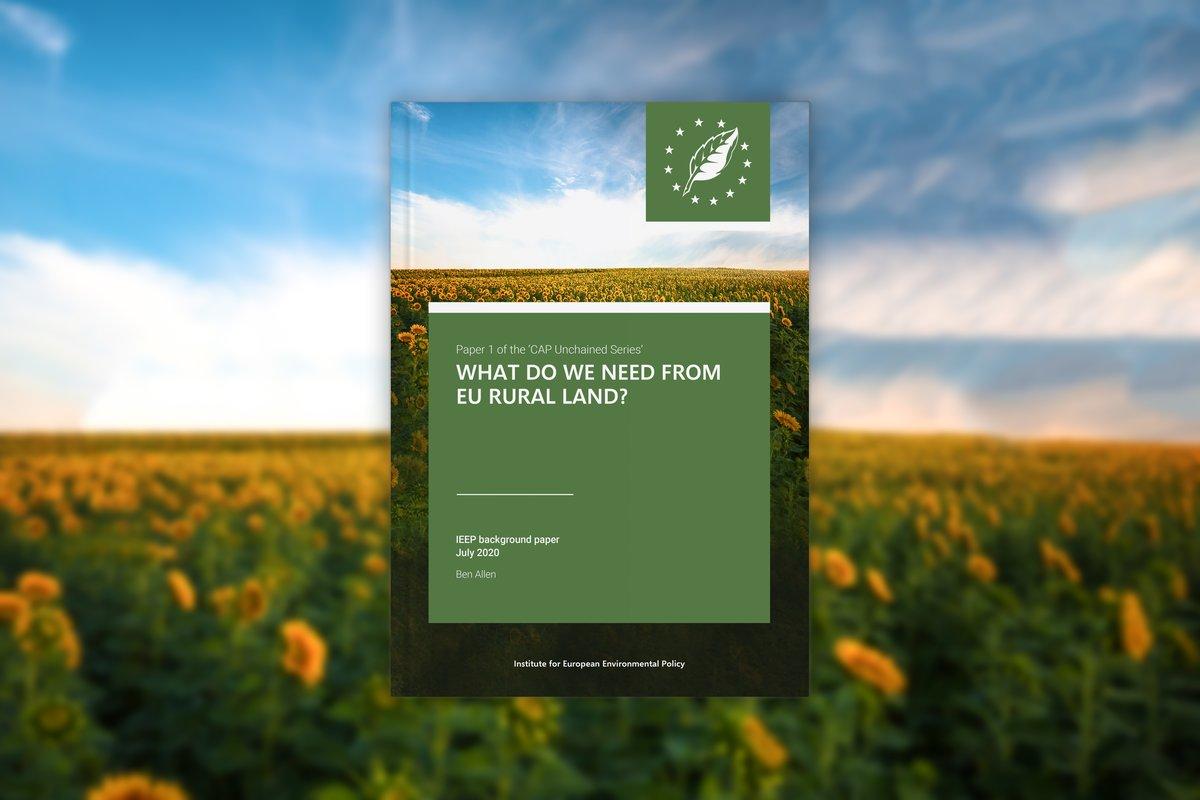The first in a series of three, this paper focuses on the rationale for the prioritisation of environment and climate goods and services from EU rural land, and gives some insight into how they might be incentivised.
What does society need from rural land in the EU, what can that land supply and how could it be incentivised through a public budget equivalent to that of the current Common Agricultural Policy (CAP)?
This paper is the first in a series of three, that looks to set out a rationale for what we need from rural land, before subsequent papers explore what a new and different policy would look like to achieve such a vision, and a transition pathway to enable systemic change.
Rural land (which excludes urban and industrial areas) covers around 95% of the EU’s land surface. It a multi-functional resource that delivers and has the potential to deliver a wide range of productive, regulating and cultural services to society (for example, food, water retention, landscapes) – so-called Ecosystem Services.
The areas of rural land are generally declining, becoming more fragmented as a result of urban and infrastructure expansion, and their condition is deteriorating. The European Environment Agency’s recent 2020 outlook report paints a stark picture of the condition of rural land and the ecosystems associated with it. Only one of the indicators of the environment (area of protected sites) is on target to reach its 2020 goals, the remaining nine indicators covering land, soils, water, biodiversity and ecosystems show declining or mixed outlooks, and none are on track to meet 2020 or 2050 targets.
As humans, we have basic primary needs – such as food, air, water and shelter, with a series of secondary and tertiary needs that lead to self-fulfilment. Many of society’s needs are provided by land, yet they are not equal either in their importance or in their priority for public support. Private needs, such as food, are generally satisfied by markets and are traded globally. Yet there are common or public needs (such as biodiversity or cultural landscapes) that can only be enjoyed locally, suffer from undersupply and require public interventions to ensure they are delivered.
The needs we have as a society from land are different from the needs that society has for the land. Whilst we need food, water, shelter, etc., from land, prioritising any of these may lead to the exclusion of others. What is needed is for land to be in a position to provide all of these needs indefinitely. This draws attention towards a primary and overarching need for land, which is to have healthy and functioning ecosystems, biodiversity and a stable climate from which all other needs from land can be derived.
It is, therefore, essential to bring ecosystems back into equilibrium as a baseline condition if we stand any chance of meeting societal needs, goals and targets, such as curbing global temperature rise or allowing future generations the ability to produce food in a more sustainable way that is compatible with the environment from which it is derived.
Public incentives for land-based goods and services must, therefore, be oriented towards delivering these common goods.
Focussing public incentives in this way requires a fundamental rethink of the policies that influence land. Future policy will need to address the wider scope of rural land and the use of commodities or products (bioresources) obtained from land, to provide coherence between the drivers and use and management of land. There should be a guiding framework for land under which all other relevant policies are developed. This would need to be supported by allied policies and tools addressing trade and export.
Such a change in focus from what is needed from EU land and what should be incentivised has urgency, yet there is an inherent need for transitional support as land managers re-orientate and re-tool. A roadmap for systemic change will be essential.

